When I first moved to eastern Idaho some 16 years ago, it was near the end of summer, and the guys at the fly shop were all atwitter about “Hopper Season.” A month later, the fly shop crowd splintered into two camps -- one was all worked up about steelhead on the Salmon River about four hours northwest and the other was dialing in on the fall brown trout runs on the South Fork and the Henry’s Fork.
As the year moved on, I heard about the blue-winged olive hatch on the South Fork during dark, unsettled days in November, and a second olive hatch sometime in the spring. Then the skwalas hatched on the Bitterroot and Rock Creek in March and April, and that was a drive worth taking.
I heard about an explosion of midge hatches on the Snake near Jackson that coincided with the cutthroat run up the river from the canyon, and if you could time it just right, it was the best time of the year to hook into a fat cutty on the river.
Then, of course, as spring slipped into summer, I heard talk of massive salmon flies on the Henry’s Fork, and a few weeks later, a reprisal on the South Fork. Then pale morning duns topped the summer menu, starting sometime around Father’s Day and hanging tight until “Hopper Season” started grabbing attention once again.
But, in a world where seasons are described by hatches and the fish that feed on them, I was most intrigued by what a good friend of mine described as “the January thaw.”
“The January thaw?” I asked. He and I were chatting over beers at a Christmas party, and he had mentioned, after an Arctic blast had just ripped through Pocatello, that the weather would warm up a bit, and these days of high temps in the teens would go away.
More Like This
“Oh, it’ll still be cold,” he said. “But not too cold.”
So I started to pay attention to the weather, and sure enough, right around the middle of January, the clouds parted, the sun broke through and the mercury started to climb. It climbed from single digits over the Holidays to the teens just after the new year. By the second weekend in January, highs were in mid-30s, and the snow on the rooftops started to slide onto the streets, and grass poked through on south-facing lawns.
The January thaw.
Now, it would be wrong to assume that this meant the end of winter in eastern Idaho -- far from it, honestly. It’s as if winter… takes a break. A gentle reminder that when we say, “I’m tired of this shit,” and look to the heavens for a break in the long, dark monotonous gray skies of winter, somebody upstairs is listening and is sending us a little respite before dropping the snowy hammer in February. And March. And… April and sometimes even May.
So we go fishing.
And winter along just about any stretch of water in January in eastern Idaho is going to be an icy endeavor. Guides will freeze (unless you’re a Tenkara convert), fingers and toes will go numb and beards will ice up and crystalize. It is what it is, and if that’s not your cup of tea, stay home and reread your Gierach books.
As I’ve gotten older, I’ve come to realize that I start to mutter “I’m too old for this shit” a lot more often, especially in the winter when my younger friends are sticking browns and rainbows on the Henry’s Fork amid single-digit temps and dodging floating chunks of ice that come careening downriver and can take your feet out from under you.
But when the January thaw hits, I’ve learned … well, I may never be too old for that, honestly.
It’s a time of true quiet on the river. Feet of snow line the banks of the Henry’s Fork, and the canyon insulates the river from the wind. Wintering bald eagles coast above the water and scold anglers for horning in on their favorite fishing runs with whiny chirps more suited to tantrum-throwing toddlers than the regal national symbol. And, when the sun hits the water, midges pop and the trout slide to the surface, seemingly just as happy as we are with the state of the thermometer.
And not just those miniscule “snow flies” my grandfather used to talk about--those size 24 pepper flakes that only prisoners should be forced to tie. Big ones. Size 18. Even size 16 suckers. Huge.
But it’s not just about dry flies. In fact, most of the fishing is done with small nymphs -- size 18-20 Copper Johns, bead-head hare’s ears, pheasant tails and size 20 Zebra midges, all either slowly pulled through the riffles, Czech-nymph style, or drifted under indicators. And, frankly, it’s not just about trout, either. Some of the biggest whitefish in the river are most active in the winter months, and they’ll pod together during the thaw and provide some of the fastest-paced action of the year, not just the winter. And, of course, streamers are always an option, and it’s certainly possible to bring a big brown or rainbow to hand swinging size 6 ‘Buggers and Zonkers through the deeper runs.
I won’t lie, though -- as much fun as it is chasing fish and catching trout on nymphs and streamers, there’s something very cool about catching trout on visible dry flies while bundled up against the elements. It seems so counterintuitive to see trout, as that slanted winter sun filters into the green water of the fabled river, slice to the surface. It brings out that childish giggle, and more than once, I’ve glanced to the sky to see an eagle cruising overhead while I battle a zesty rainbow that fell for a winter dry. Tempted as I am to send the noble bird a bird of my own, I just settle on a satisfying, “take that, Jackwagon!” glare.

And then, as the river starts to remind the fingers and the toes that it is, indeed, January, it’s equally satisfying to crawl back into the cab of the truck, turn the heater to defrost and soak up the heat from the engine block as it thaws raw fingers and toes.
Sated by fishing -- and a Big Judd’s cheeseburger -- the drive home in the winter twilight as the setting sun lights up the Tetons, it suddenly doesn’t feel as though winter will last forever. Spring is on the horizon, then it’s time for salmon flies and pale morning duns.
Before you know it, it’ll be Hopper Season once again.




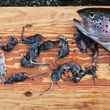
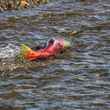

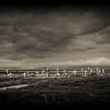



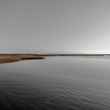
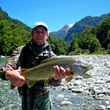



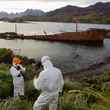




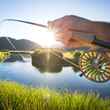





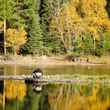


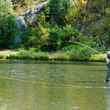
Comments
BJMoose replied on Permalink
Myth! There are no Skwalas in the Bitterroot. Besides the weather stinks and the people are grumpy after the long dark winter (which in March is not even over). I hear Rock Creek is nice tho.
Pages